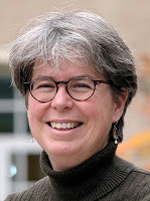Prayer is the monk’s mirror. — from the “Apophthegmata Patrum, The Sayings of the Fathers and Mothers of the desert”
When I think of how I pray, I have to admit that the first image that pops into my mind is of my childhood night time prayers: My head tucked under the covers, my desire to have such faith that I might be able to see clearly, clutched tightly in my fist along with my rosary and my pleas for protection during the deep, dark silence of a countryside night arising like incense.
At age 10, my whole prayer life could have been gathered up in a single phrase, “God, come to my assistance, Lord, make haste to help me.”
John Cassian, a fifth century theologian, learned from the desert fathers to use precisely that one line from Scripture as his primary prayer. St. Augustine wrote of the practice in his letter of advice on prayer to the widow Proba, telling her he had heard of the brothers in the Egyptian desert who hurled their short, sharp prayers like spears.
Abba Ammonas, a disciple of St. Anthony the Great and a fourth century bishop, said to a monk who came to him wrapped in nothing more than a mat of reeds and seeking advice on how to live an even more ascetic life, advised him to fast a little less and instead “have at all times the words of the tax collector in your heart and you can be saved.” Ammonas is referring to the tax collector in Matthew’s Gospel, who stands in the back of the synagogue praying, “O God, be merciful to me a sinner.”
Fifteen centuries ago, this is how the desert fathers and mothers suggested we pray, by breathing over and over again, “Lord Jesus Christ, Son of the Living God, have mercy on me, a sinner.” Today the Catechism of the Catholic Church still recommends the Jesus Prayer as the simplest way to pray, as both a starting point for learning to pray, and a prayer in which we can take refuge when the chaos of life threatens to overwhelm us.
This prayer is not so much a request as it is first and foremost a creed, a cry of belief. Who do you say that I am? (Mt. 16:15-16) “Jesus Christ, Son of the Living God.” But the Jesus Prayer tells us who we are as well. St. John of the Ladder, a sixth century abbot of a monastery on Mount Sinai, reminded his monks, “Your prayer will show you what condition you are in. Theologians say that prayer is the monk’s mirror.”
And who do I see in the mirror of the Jesus prayer? Have mercy on me, a sinner. I see myself, a sinner. So does Pope Francis. Beginning his interview with the pope last summer, Jesuit Father Antonio Spadaro put aside his planned questions to ask, “Who is Jorge Mario Bergolio?” instead. The pope was silent for a few moments, and at last responded, “I am a sinner. It is not a figure of speech … I am a sinner…. I am a sinner whom the Lord has looked upon.”
The pope went on to remind us that we see in the mirror of the tax collector’s simple prayer not only that we are sinners, but that we are sinners who have been looked upon by God with love and with mercy. The Jesus Prayer of the desert fathers and mothers is a mirror of prayer which lets us see ourselves not only as we are, but as we could be, by the grace and mercy of God. Jesus Christ, Son of the Living God, have mercy on me. For I am a sinner.
***
To read from Scripture:
The story of the tax collector in the synagogue: Matthew 18:9-14
To read from the Church’s tradition:
St. Augustine’s letter to Proba, see page 391.
To listen:
Sir John Tavener wrote this haunting and discordant setting for the popular Icelandic singer Björk. The Jesus Prayer repeats in Coptic, the language of the desert fathers and mothers, in Greek and in English.
***
Michelle Francl-Donnay is a member of Our Mother of Good Counsel Parish, Bryn Mawr.
PREVIOUS: One can’t dialogue with Satan, pope says; the Bible is the best defense
NEXT: Praying Lent: Tuesday of the First Week of Lent




Share this story